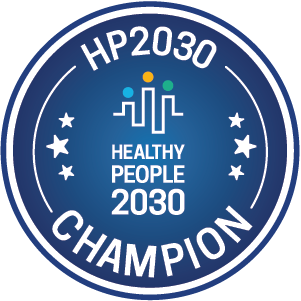Promising Practices
The Promising Practices database informs professionals and community members about documented approaches to improving community health and quality of life.
The ultimate goal is to support the systematic adoption, implementation, and evaluation of successful programs, practices, and policy changes. The database provides carefully reviewed, documented, and ranked practices that range from good ideas to evidence-based practices.
Learn more about the ranking methodology.
Filed under Good Idea, Education / Student Performance K-12, Children, Teens
Goal: The goal of See You in School is to improve the grades, self confidence and engagement of high school students through mentor/mentee relationships. Decreasing the dropout rates in Whatcom County is a long term goal that begins with the mentor/mentee relationship and a network inside the schools.
Filed under Effective Practice, Health / Older Adults, Older Adults
Goal: Both local and state governments face huge challenges in providing senior populations access to public, agency, professional and family caregivers, and community services that allow seniors to remain independent. The complex maze of constantly changing program and service eligibility rules challenge even the most knowledgeable senior service providers. Fragmentation within senior service agencies further results in duplication of services, unnecessary waiting lists, and caregiver and volunteer burnout. This resource attempts to address those problems by providing quick and easy access to a variety of programs.
Filed under Good Idea, Health / Older Adults, Older Adults
Goal: The mentoring process is designed to help clients work through feelings and emotions, to recognize strengths and coping skills, and to redirect life toward greater meaning and purpose.
Filed under Good Idea, Health / Older Adults, Older Adults
Goal: The goal of this program is to improve the quality of life of residents of Northeast Florida by providing programs and services which raise the health, education and economic standards of citizens living at the lowest social and economic levels.
Filed under Good Idea, Environmental Health / Toxins & Contaminants
Goal: Septic systems serve approximately 25 percent of the U.S. population and about 40 percent of new developments. The U.S. Census Bureau has indicated that at least 10 percent of septic systems have stopped working. Some communities report failure rates as high as 70 percent! The goal of this program is to improve the performance of decentralized septic systems.
Filed under Effective Practice, Environmental Health / Built Environment
Goal: Smart Growth has three straightforward goals:
- to save our most valuable remaining natural resources before they are forever lost,
- to support existing communities and neighborhoods by targeting state resources to support development in areas where the infrastructure is already in place or planned to support it, and
- to save taxpayers millions of dollars in the unnecessary cost of building the infrastructure required to support sprawl.
Filed under Good Idea, Health / Oral Health, Children
Goal: S4L strives to create self-confidence and change the lives of underprivileged children by providing orthodontic services at no cost.
Filed under Good Idea, Health / Oral Health, Children
Goal: S4L strives to create self-confidence and change the lives of underprivileged children by providing orthodontic services at no cost.
Filed under Good Idea, Health / Oral Health, Children, Families
Goal: The Smile Programs... the mobile dentists mission is to bring state-of-the-art, dental care to those students in need in the most comfortable and effective way possible.
Impact: Smile Programs provides mobile dental care to children in schools in over a dozen states.
Filed under Effective Practice, Health / Health Care Access & Quality
Goal: This study sought to examine whether Supplemental Nutrition Assistance Program (SNAP) participation and benefit levels are associated with reduced subsequent hospital and emergency department utilization in low-income older adults

